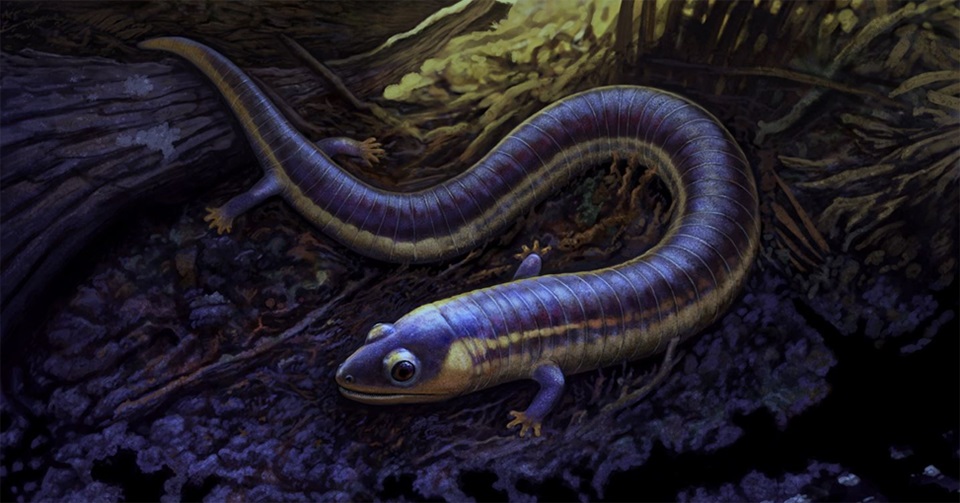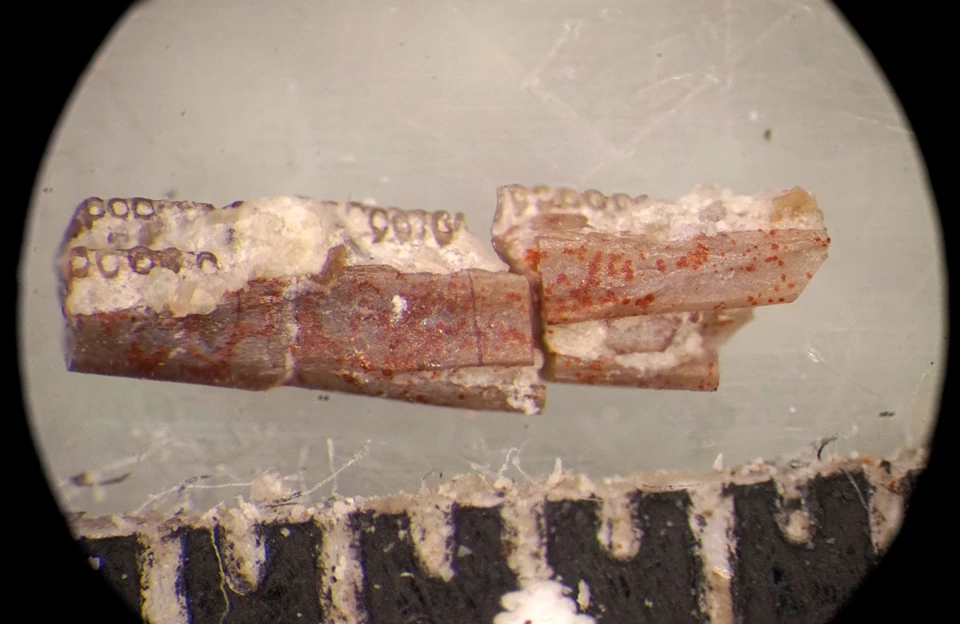News Release

Image may be used in press materials with credit made to Andrey Atuchin, the National Park Service, and the Petrified Forest Museum Association.
|
Subscribe
|
Contact: Dr. Adam Marsh, 928 524-6228 x263
Petrified Forest, AZ- Paleontologists at Petrified Forest National Park and colleagues from Virginia Tech and the University of Washington named a new species of fossil amphibian from Petrified Forest, published today in the prestigious scientific journal Nature. The Triassic amphibian, named Funcusvermis gilmorei (pronounced funk-us ver-mis), is the oldest caecilian in the world; caecilians are now-legless amphibians that along with frogs and salamanders make up the modern groups of amphibians.
The bones of Funcusvermis were discovered in 2019 by park paleontologists by removing microscopic fossils from almost 5000 pounds of sediment from a fossil site called Thunderstorm Ridge at Petrified Forest. The Triassic fossils from this site are approximately 220 million years old, making Funcusvermis 35 million years older than the previously reported oldest caecilian from the Early Jurassic. As of today, more than 76 lower jaws of Funcusvermis have been collected from the site, as well as an upper jaw, vertebra, and thigh bone, making Thunderstorm Ridge the most abundant caecilian bonebed ever discovered. This site represents a pond or wetlands within a hot, humid forest, the perfect environment for preserving small, delicate fossils like those of Funcusvermis. Findings from this study also provide support for the ongoing scientific debate that the three modern amphibian groups share a common evolutionary ancestor with one another, as opposed to other extinct groups of amphibians.
The scientific name of this new worm-shaped amphibian was inspired by the song Funky Worm, featured in the 1972 album Pleasure by the Ohio Players, which was often played by Petrified Forest paleontologists while these fossils were collected. The genus name, Funcusvermis, roughly translates to “funcus”, meaning funky, and “vermis”, meaning worm. The species name, gilmorei, honors Ned Gilmore, the Collections Manager at the Academy of Natural Sciences of Drexel University, PA.
Open-access funds for the article were provided by the Petrified Forest Museum Association and Virginia Tech, and it can be freely downloaded at Nature: https://www.nature.com/articles/s41586-022-05646-5.
Kligman, B., Gee, B., Marsh, A., Nesbitt, S., Smith, M., Parker, W., Stocker, M. (2022) Triassic stem caecilian supports dissorophoid origin of living amphibians, Nature 614, doi: 10.1038/s41586-022-05646-5.

Photo Credit: Ben T. Kligman.
Last updated: October 10, 2024
